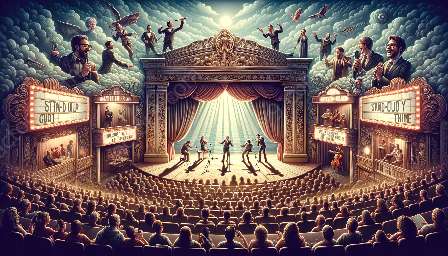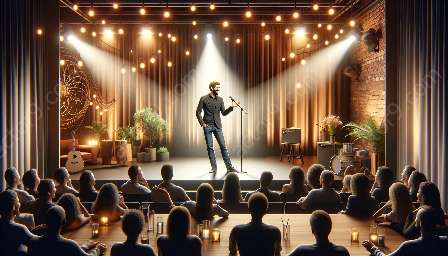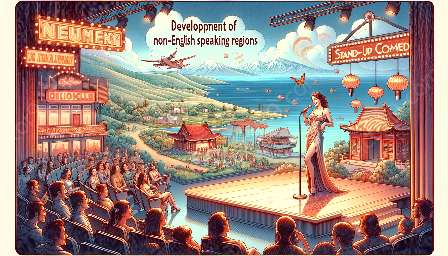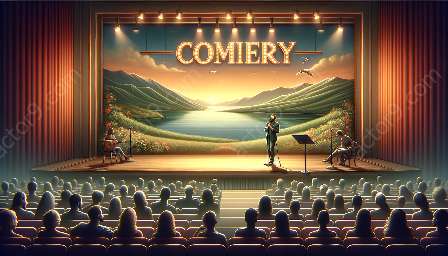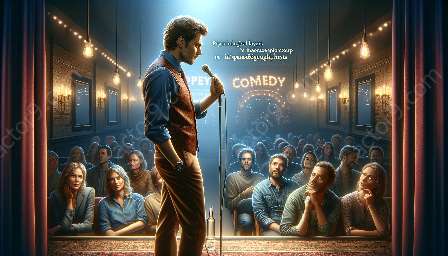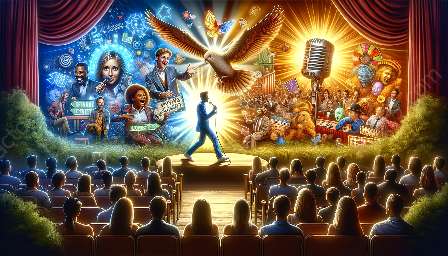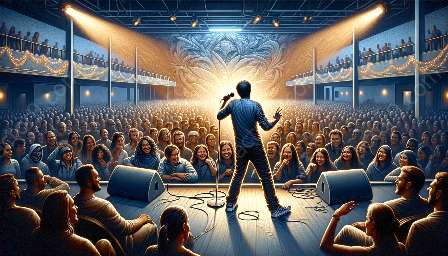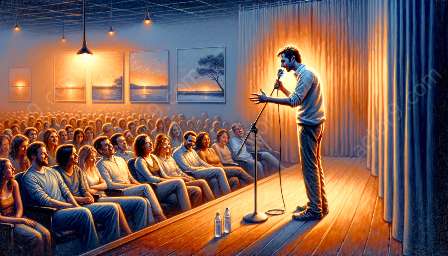Stand-up comedy is an art form that requires a delicate balance of structure, pacing, and improvisation to captivate and entertain audiences. As a stand-up comedian, it's essential to understand the key principles for structuring and pacing a stand-up comedy set to maximize audience engagement and enjoyment, while staying true to the essence of stand-up comedy.
The Importance of Structure in Stand-Up Comedy
Structuring a stand-up comedy set involves organizing your material to create a cohesive and engaging performance. By incorporating a well-thought-out structure, you can help your audience follow the flow of your jokes and maintain their interest throughout the set.
1. Opening: The opening of your set sets the tone for the entire performance. It's crucial to start strong to capture the audience's attention and establish a connection with them from the beginning. An attention-grabbing opening line or observational humor can effectively draw the audience in.
2. Storytelling: Incorporating storytelling into your set can provide a deeper connection with the audience. Sharing personal anecdotes or relatable experiences can create a more genuine and engaging performance.
3. Timing and Pacing: Timing is crucial in stand-up comedy. Understanding when to deliver punchlines, pause for laughter, and transition between jokes is essential for maintaining momentum and keeping the audience engaged. Pacing your set effectively ensures that the energy and humor are sustained throughout.
Maximizing Audience Engagement through Pacing
Successful pacing is essential for maximizing audience engagement and enjoyment. A well-paced set keeps the audience intrigued and laughing, while allowing room for improvisation and audience interaction.
1. Dynamic Transitions: Smooth transitions between different comedic elements, such as one-liners, storytelling, and observational humor, maintain variety and momentum in the set. These transitions can be planned or improvised, adding an element of spontaneity to the performance.
2. Audience Interaction: Embracing improvisation by interacting with the audience can create memorable and authentic moments. Engaging with the audience provides an opportunity to incorporate spontaneous humor and tailor your performance to the unique dynamics of each show.
3. Emotional Peaks and Valleys: Crafting emotional peaks and valleys within your set adds depth and resonance to your performance. Balancing moments of high-energy humor with more introspective or emotive material can create a well-rounded and engaging experience for the audience.
Embracing Improvisation in Stand-Up Comedy
Improvisation is a key component of stand-up comedy, allowing comedians to react in the moment and adapt their material based on audience responses and interactions. Incorporating improvisation into your set adds an element of spontaneity and authenticity, enhancing audience engagement.
1. Adapting to Audience Reactions: Paying attention to audience reactions and adjusting your performance on the fly demonstrates your ability to connect with the crowd. You can capitalize on unexpected moments, hecklers, or unique audience interactions to create memorable and humorous experiences.
2. Flexibility within the Set: Allowing flexibility within your set enables you to incorporate improvised jokes or responses without disrupting the overall flow. This adaptability showcases your comedic agility and keeps the audience engaged through unpredictability.
3. Spontaneous Wit: Harnessing your spontaneous wit and improvisational skills can lead to organic and genuinely funny moments. Embracing the unpredictability of live performance adds an authentic and compelling dimension to your stand-up comedy set.
Staying True to the Essence of Stand-Up Comedy
While implementing structure, pacing, and improvisation in your comedy sets, it's essential to remain true to the essence of stand-up comedy. This involves staying authentic, connecting with the audience, and delivering a unique and memorable performance that aligns with the spirit of stand-up comedy.
1. Authenticity and Vulnerability: Connecting with the audience on a genuine level requires authenticity and vulnerability. Sharing personal experiences and genuine emotions can foster a stronger connection with the audience.
2. Adaptability and Resilience: Embracing the unexpected and adapting to different audience dynamics or unforeseen circumstances demonstrates resilience and adaptability. It's important to remain composed and carry the audience through any unexpected moments with humor and grace.
3. Unpredictability and Surprise: Stand-up comedy thrives on unpredictability and surprise. Keeping your audience on their toes with unexpected punchlines, spontaneous interactions, or off-the-cuff remarks adds an exciting and dynamic element to your performance.
By incorporating these key principles for structuring and pacing a stand-up comedy set, embracing improvisation, and staying true to the essence of stand-up comedy, you can create a captivating and enjoyable experience for your audience. Balancing structure with spontaneity, timing with improvisation, and authenticity with engagement allows you to craft stand-up comedy sets that resonate and leave a lasting impact.


